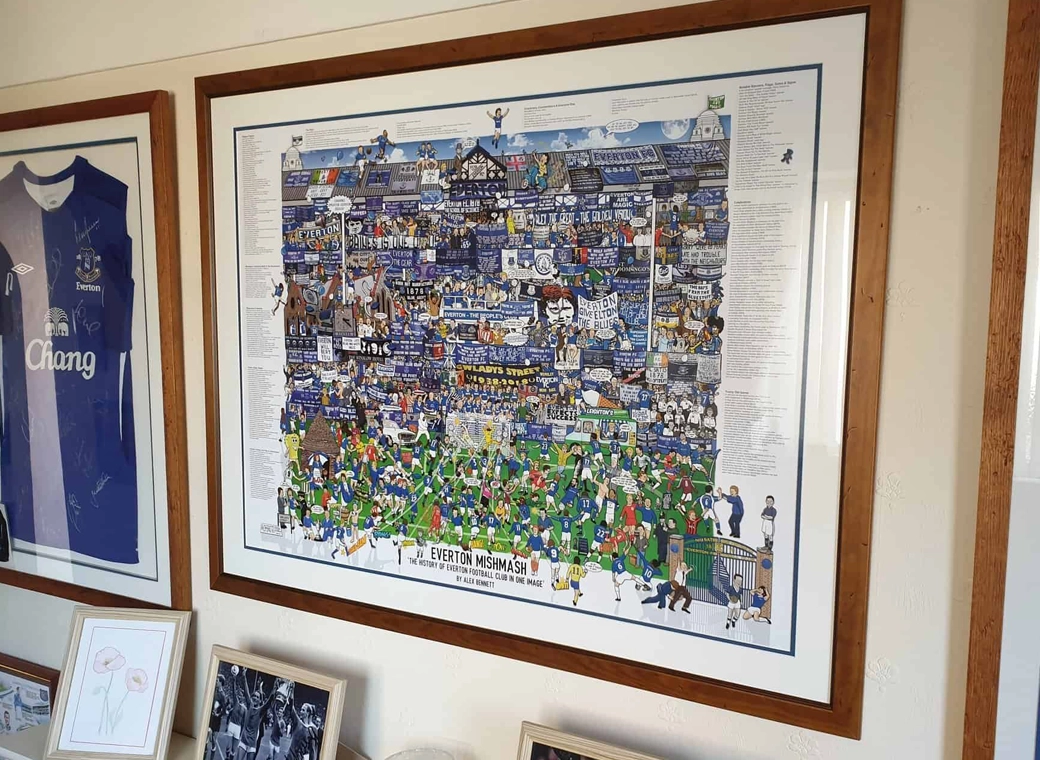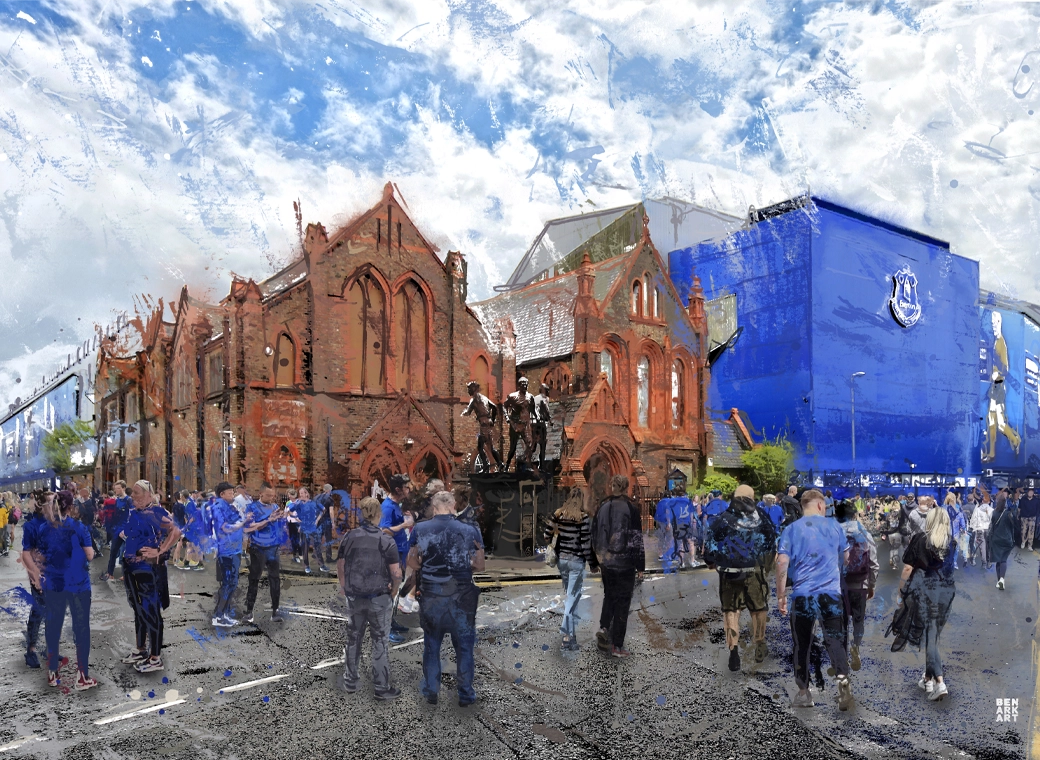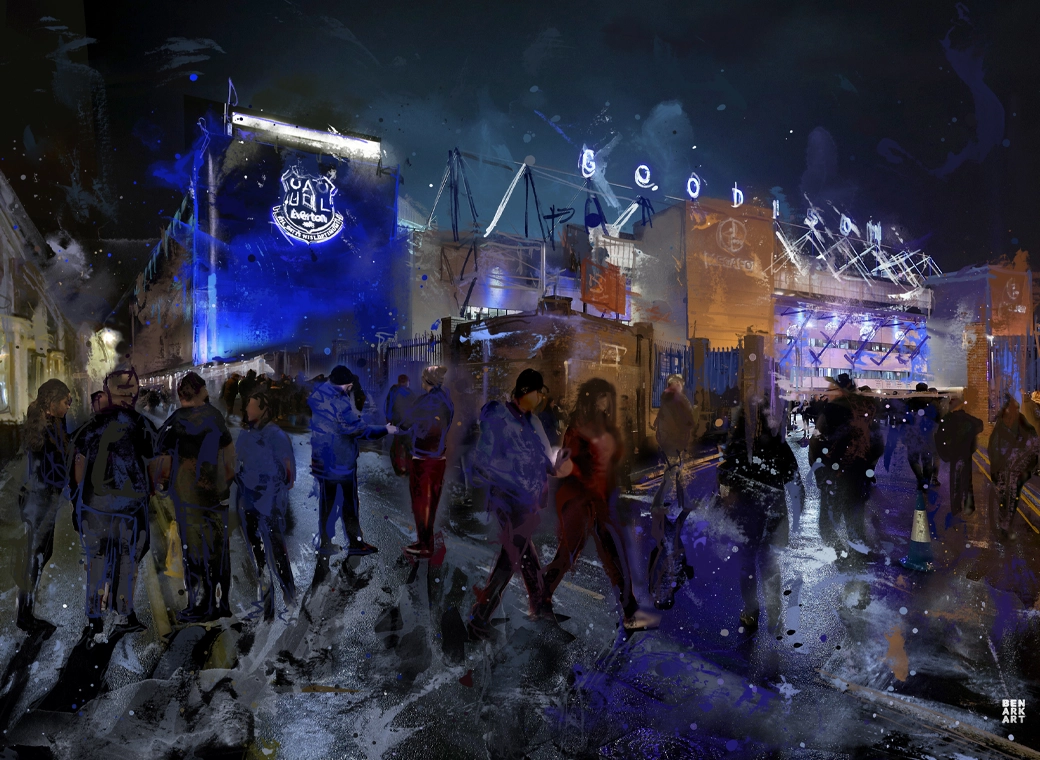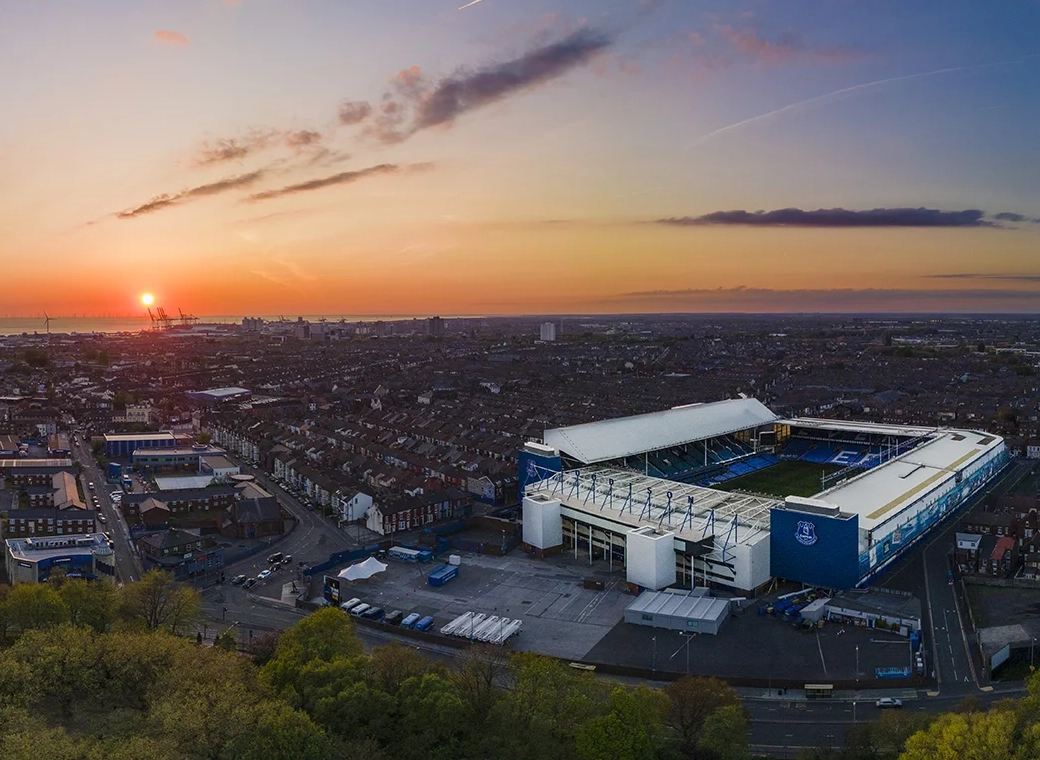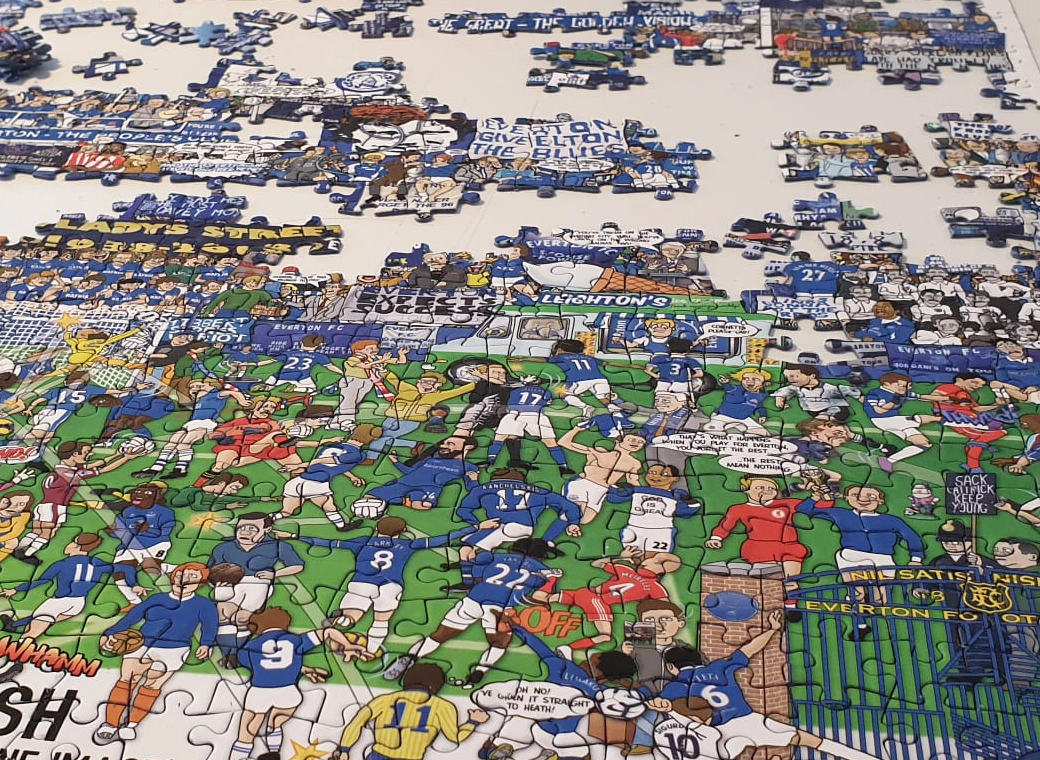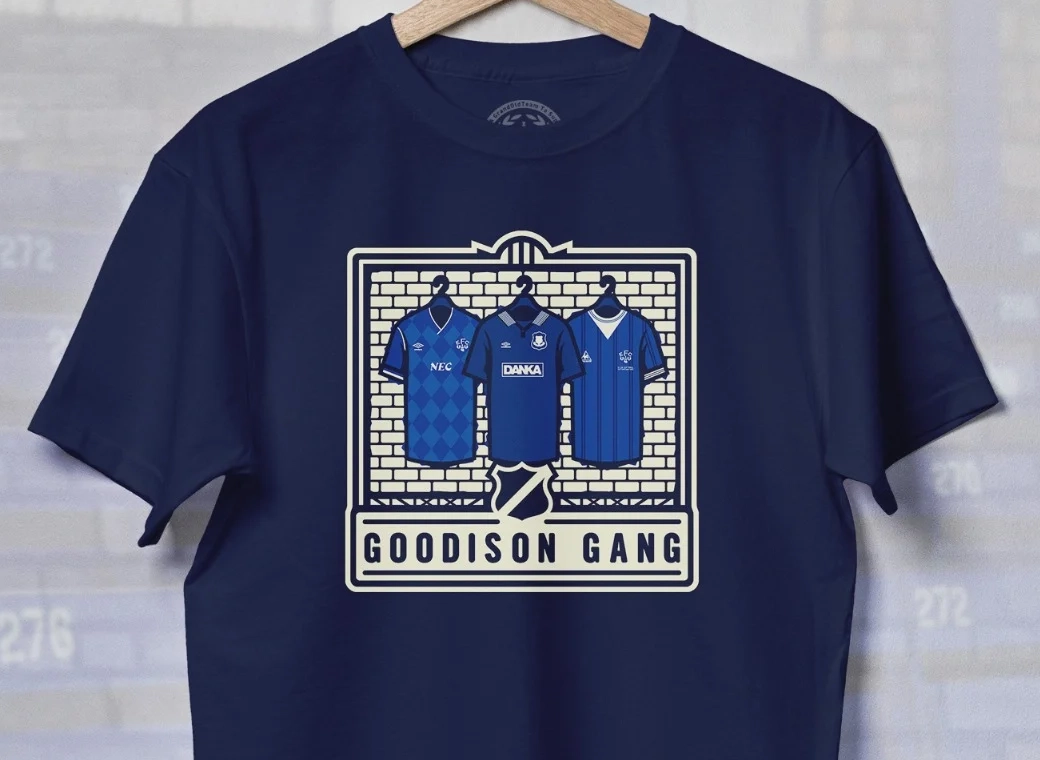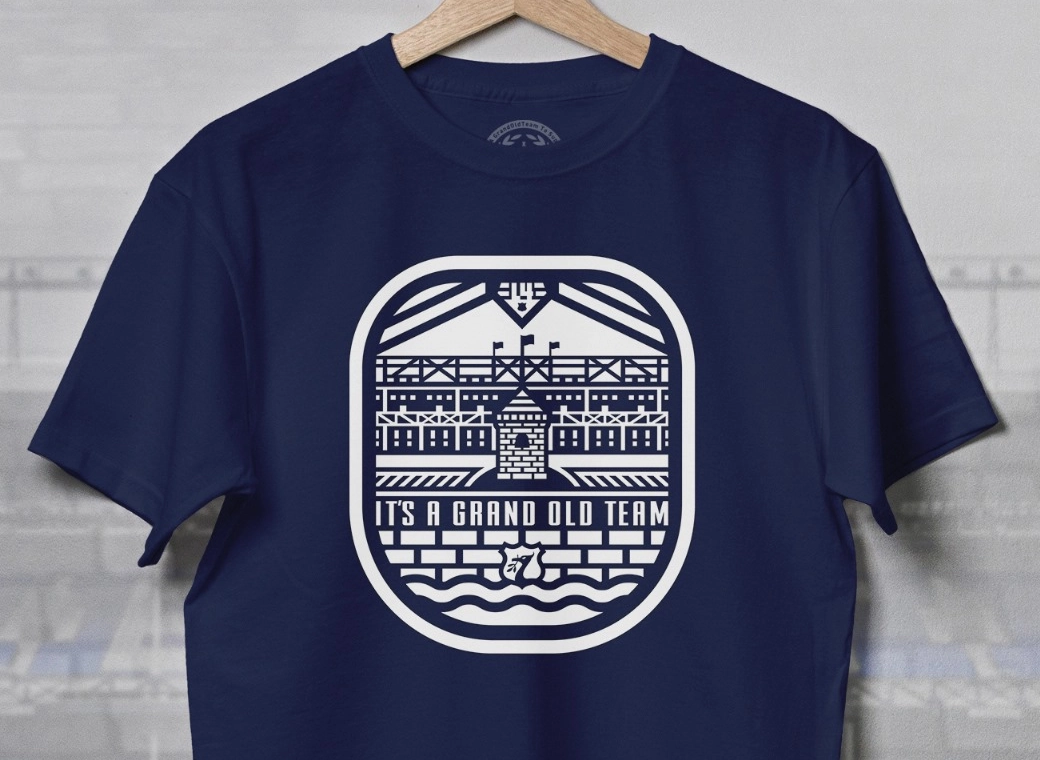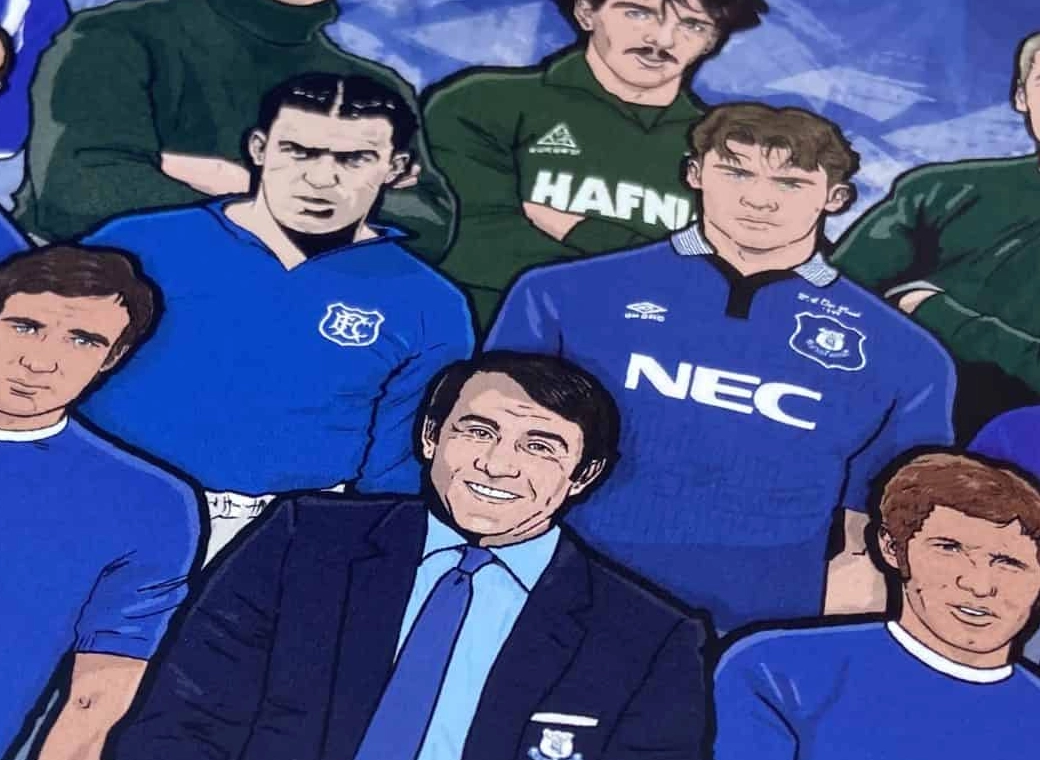Tactical analysis: what Ronald Koeman will bring to Everton via Royal Blue Mersey
The Dutchman will be tasked with organizing a side in dissaray
Well,
we’ve got our man! Ronald Koeman has been appointed Everton manager on a three-year deal to succeed Roberto Martinez. Let’s take a look at what sort of tactics our favorite rosy-cheeked Dutchman might be bringing to Goodison.
The basics: formation and philosophy
Koeman has usually preferred a 4-2-3-1 in his Southampton days, somewhat along the lines of the below:
This can be adapted to more of a 4-4-2 or 4-5-1 in defense or when protecting a lead, or an aggressive Dutch-style 4-3-3 with the wingers pushing up high.
In a basic sense, this is nothing new for Everton fans; Roberto Martínez (and most teams in the Premier League for that matter) started most matches with a similar setup. Given Koeman’s relative success with the system at Southampton and the Everton players’ familiarity with it, I think for the most part we’ll probably see something like this from Everton for a majority of the time this season.
Philosophically, Koeman is about what you’d expect from someone with his deep ties to Ajax, Barcelona, and the Dutch national team. He wants his sides to dominate games through possession, technical skill, a commanding midfield, and creative attackers. (Then again, who doesn’t?). With that being said, he is by no means a dogmatist, and has in the past been shown to be much more pragmatic than he would probably admit publicly.
Defensive organization and pressing
So Koeman wants to play attacking football, and usually out of a 4-2-3-1. This is about where the similarities with Martínez end.
It’s no secret that Everton’s defense was absolutely awful this year. I harped on it here
throughout the season, and anyone who watched them was treated to gaping holes galore. At best it resulted in entertaining matches like the
6-2 against Sunderland or the
FA Cup defeat against Manchester United. At worst it meant they
couldn't hold a lead to save their life or they just
full-on capitulated.
These defensive deficiencies were clearly not lost on the powers that be at Everton. One of Koeman’s most impressive achievements during his first season at Southampton was allowing just 33 goals all season—second only to champions Chelsea. The Saints restricted their opponents to 3 shots on target per game. Since 2000, only the title-winning Arsenal side of 01-02 have bettered that number in the Premier League, and barely.
2015-16 was slightly more erratic, with a 3-0 defeat at home to Everton sticking in the memory, as well as a final 3 months of the season without a clean sheet. Still, the Saints managed to tie Manchester City at 5th in goals against with 41. This is despite losing one of the league's finest defensive midfielders in Morgan Schneiderlin during the summer 2015 transfer window.
Koeman should be able to improve Everton's defense via two avenues: pressing and compactness. These are fairly basic ways to prevent the other team from scoring but alas they seem to have not been of concern to Roberto. Everton's pressing was rather haphazard, with players frequently taking themselves out of the game and leaving exposed spaces elsewhere on the pitch.
With Koeman at the helm, Southampton didn’t press quite as intensely or as high up the pitch as they did under Pochettino. However they still were intelligent and structured with their defensive movement, as detailed in
this wonderful Spielverlagerung analysis from Koeman’s first season at St. Mary’s. In addition, they were much better and counterpressing then Everton ever was under Martínez. If they are still around, the likes of Romelu Lukaku, Kevin Mirallas, Gerard Deulofeu, and Ross Barkley will be asked to be more disciplined than they have in past season. Koeman will probably also require more mobility from the #6 than Gareth Barry can currently provide.
Secondly, under Koeman Southampton occasionally opted to drop deeper into two banks of four and restrict the amount of space the opponents’ creative players have to work with. The
1-1 draw with Liverpool in Jürgen Klopp’s Anfield debut was one such example. The Saints maintained a compact shape and denied space between the lines. It sounds logical enough, especially away from home against a good opponent, but this is something that Everton struggled to do mightily under Martínez for the better part of two seasons.
Attacking style and organization
Koeman often speaks of dominating and controlling games, but in truth has tended to use possession
as a tool rather than as a philosophy. In other words, he does not have a slavish devotion to keeping the ball for the sake of keeping the ball. Rather he is more focused on organization and positional play.
In general Koeman’s sides will build up and circulate the ball through the middle, ideally via a deep-lying, technically gifted midfielder such as Schneiderlin who can set the pace of the side. Koeman is not afraid to be somewhat fluid positionally, but he seems to do a much better job than Martínez at maintaining cover where needed.
This particular issue of offensive structure was a repeated problem for Everton this year that had two broad effects: (a) overcrowding in certain areas made it easier for opponents to remain compact and deny access to Everton's creators (e.g.
the Barkley-Koné conundrum), and (b) it left them wide open to counter attacks (e.g.
against Leicester). Based on his past work, Koeman should in theory help rectify this issue and create a more balanced attack.
Wide play is also key in the final third. At Southampton, the wingers (usually some combination of Dušan Tadić, Steven Davis, Sadio Mané, and/or Shane Long) needed to be versatile and disciplined, comfortable playing near the touchline, or cutting inside and allowing overlaps from the fullbacks, which Koeman's setup generally encourages. Last year they
crossed the ball quite a bit, which isn’t good or bad in a vacuum, but perhaps an indication that Koeman isn't afraid to go for volume over quality in certain situations. It also may mean that Leighton Baines and Seamus Coleman could again become key players in Everton's attack after a year of less involvement.
Flexibility
Perhaps the most attractive aspect of Koeman’s style following the Roberto Martínez reign is that he is generally tactically flexible. For example, whereas Martínez was committed to playing out of the back or dying trying, Koeman seems happy to vary short and long depending on the situation. Formationally as well, it’s not unheard of to see a 4-4-2 or a
3-5-2 as against Watford last August.
As I mentioned above, possession is another arena in which Koeman is not uncompromising. He needed just 41% in a famous
1-0 win over rival Louis van Gaal and Manchester United at Old Trafford in January 2015. More recently, season-ending victories over Manchester City, Tottenham, and Crystal Palace all required fewer than 50% possession.
Even stylistically, Southampton went from
barely counterattacking at all in 2014-15 to being
one of the league leaders in the category this season. All of which is to say that philosophy is not the same as dogma, and under Koeman we can reasonably expect a variety of approaches in attack based on the opponents and available persona.
Conclusion
Tactically and philosophically, Ronald Koeman can reasonably be seen as somewhat of a midpoint between David Moyes and Roberto Martínez. Committed to attractive football, yes, but also pragmatic and realistic. The best case scenario is that he instills a defensive fortitude in a side already brimming with attacking power. On the other hand, it’s possible that if the squad does not take to his methods and a few early results go the wrong the way that he tightens the reigns, pragmatism wins out, and we’ll be back to a duller Moyesian ethos.
Based on his work at Southampton and the players he has at his disposal at Everton, I think that at least tactically, Koeman is a good fit for this side and is adept at the very thing Martínez was not: organization. However, key positions must be upgraded for his system to functionally properly—notably at defensive midfield and probably center back and striker (if Lukaku departs). While most of the rumor mill has understandably been focused on the managerial search, hopefully attention can soon turn to the transfer market.
Read Full Article
Continue reading...







